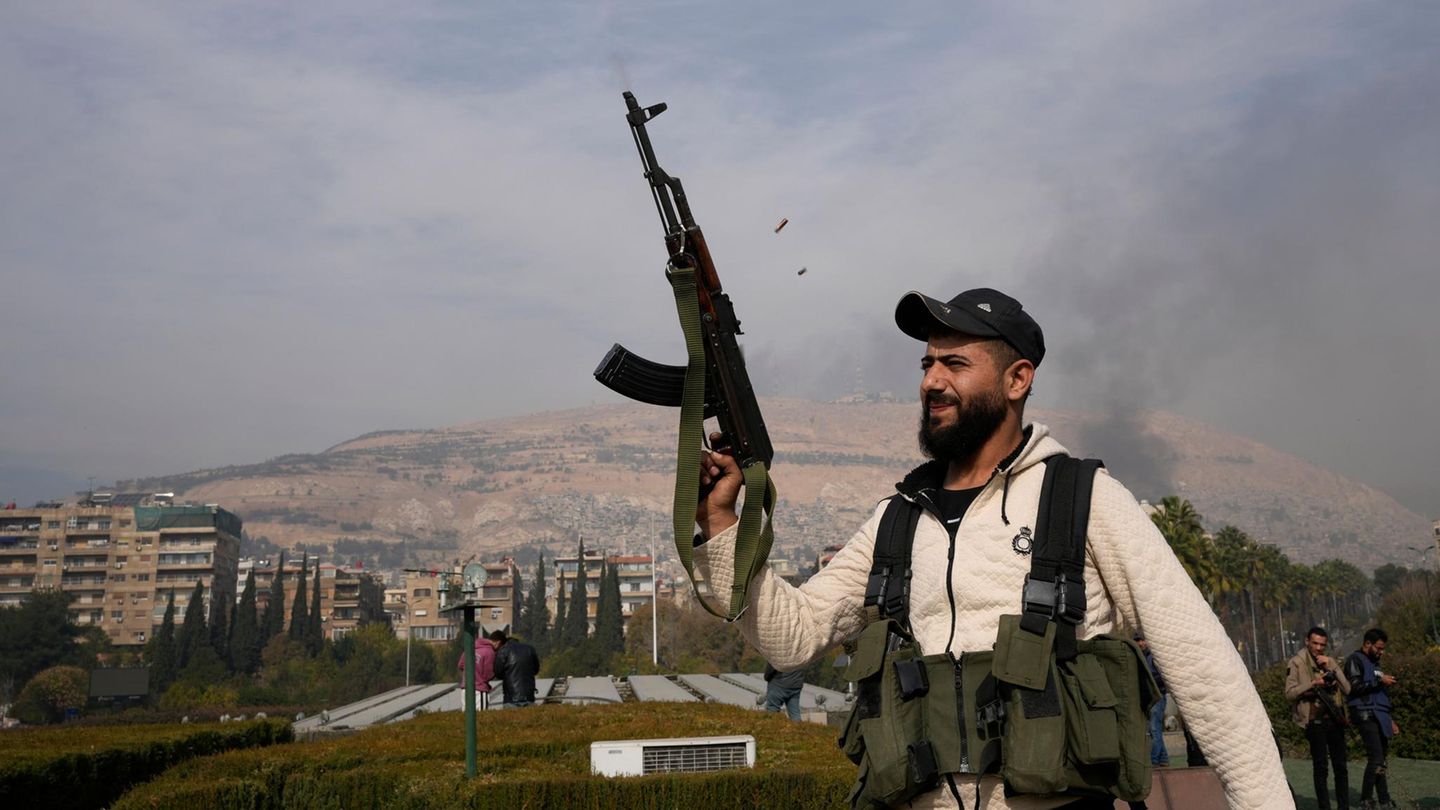Overthrow of the Assad regime
Who is who and who controls what in Syria?
Copy the current link
The Assad regime has fallen. But Syria is big – and the rebels are not the only power in the country. An overview.
“Historic” is a term that is used inflationarily, but was invented for days like December 8, 2024. The Assad dynasty oppressed the Syrian population for more than half a century, but now their reign of terror appears to be over.
After years of bloody standstill, things suddenly happened very quickly at the end. The rebel alliance under the command of Abu Mohammed al-Julani took one important city after another within days. On the night of Saturday to Sunday they finally took control of the capital Damascus. Dictator Bashar al-Assad fled abroad – destination: unknown.
All’s well that ends well? Unfortunately, it’s never that easy, especially not in the Middle East. Although Syrians all over the world are celebrating the fall of the dictator, the country is still a long way from returning to anything like unity.
But who actually has a hand in this? An overview.
Which factions play a role in Syria?
Bashar al-Assad is, was in power since 2000 – his family has controlled Syria since their coup in 1970. In contrast to his father Hafiz al-Assad, Bashar initially appeared to be a moderate reformer. But the facade crumbled when he brutally suppressed protests during the Arab Spring in 2011 – the beginning of the civil war.
Thanks to its allies in Moscow and Tehran, the Assad clique has managed to bring large parts of the country back under its control in recent years. Before the rebel offensive, the dictator controlled around 60 percent of the national territory.
The rebels around Hajat Tahrir al-Sham
Hajat Tahrir al-Sham (HTS), in German roughly: “Committee for the Liberation of the Levant”, is the leading faction of a coalition of several Islamist rebel groups. According to its leader Abu Mohammed al-Julani, the HTS, which once had close ties to the terrorist group al-Qaeda, does not want to rule permanently but rather wants to give Syria back to the Syrians. So far, selflessness has played no role in the Syrian power struggle. Is al-Julani really a kind of Arab Zelensky or just a dangerous Islamist?
The Kurds, the largest ethnic minority in Syria, control the majority-inhabited north and east of the country. After government troops withdrew from their areas, they established a largely autonomous government. The Syrian Democratic Forces (SDF) is essentially the Kurdish army – a coalition of Kurds, Syrian Christians and smaller Arab factions. The SDF controls around a quarter of the country – to this day. Thanks to their powerful Western partner.
The US supported the Kurdish fighters because they were indispensable in defeating the Islamic State on Syrian soil. Washington has had a base in the southern al-Tanf region since 2016.
The Islamic State (IS)
The Islamic State has long since had its heyday in Syria. The radical Islamists, also an al-Qaeda offshoot, once held a third of the country. In 2014 they proclaimed their caliphate on Syrian-Iraqi soil, with Raqqa as their stronghold. But a coalition led by the USA massively pushed back the Islamists. Today, IS only controls tiny remaining areas.
Turkey and the Syrian National Army
Turkey is taking action in northern Syria against the YPG militias, which Ankara classifies as an offshoot of the banned Kurdish Workers’ Party PKK and therefore a terrorist group.
President Recep Tayyip Erdoğan has long wanted to establish a 30-kilometer-long “safety zone” along the Turkish-Syrian border and house millions of Syrian refugees currently living in Turkey. The Syrian National Army is on Türkiye’s side. A misleading name, as it has nothing to do with the government in Damascus, but is itself an alliance of several rebel groups.
The surprise rebel offensive topples Assad
The civil war in Syria raged for 13 years. According to UN estimates, more than 300,000 people died and 14 million fled, including hundreds of thousands to Germany.
Little had changed in the balance of power in recent years and the front lines were deadlocked. Until the end of November, when the rebels, who had barely made it beyond Idlib province for a long time, pooled what appeared to be their last forces into an offensive – and to the surprise of most people, they were successful. And how.

Within a week, they captured strategically crucial places, including large parts of the most populous metropolis of Aleppo and the city of Hama, the gateway into central Syria on the main road to Damascus, the Assad regime’s main area of influence.
Because of the war in Ukraine, Russia recently significantly reduced its support for the regime. Without the protecting hand of Vladimir Putin and the help of the Lebanese Hezbollah militia, busy in the war with Israel, the regime was unable to stop the rebel advance – ending a decades-long reign of terror.
The victorious insurgents now control a large part of the country, including and especially the largest cities of Aleppo, Damascus and Homs. But the north and northeast of the state remain under third-party control.
The coming days and weeks will show how the other domestic and foreign actors will deal with the HTS victory.
Source: Stern
I have been working in the news industry for over 6 years, first as a reporter and now as an editor. I have covered politics extensively, and my work has appeared in major newspapers and online news outlets around the world. In addition to my writing, I also contribute regularly to 24 Hours World.





